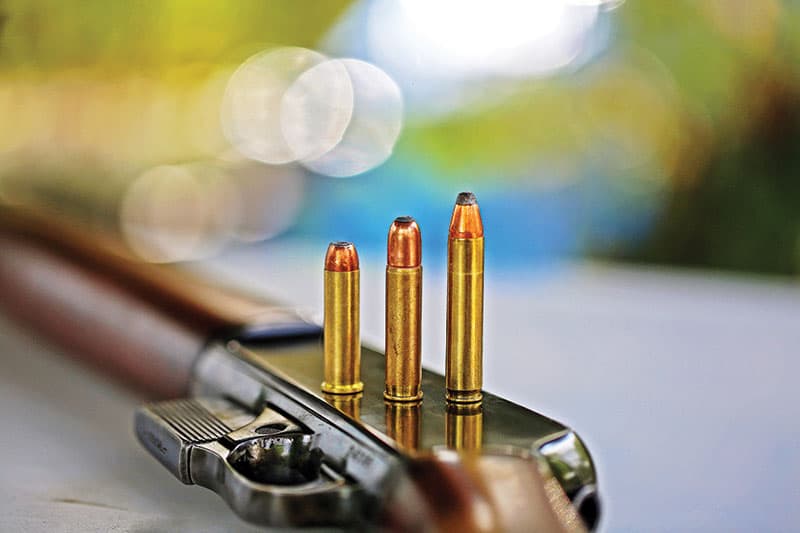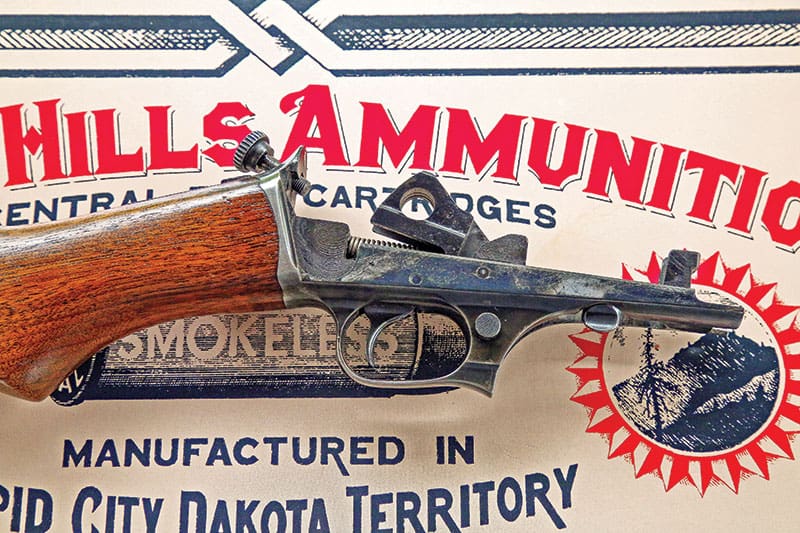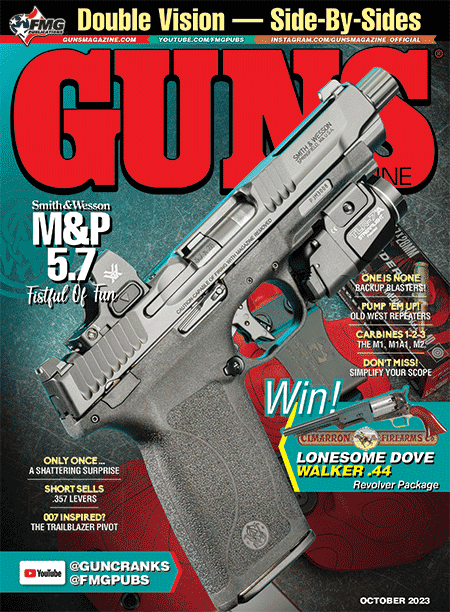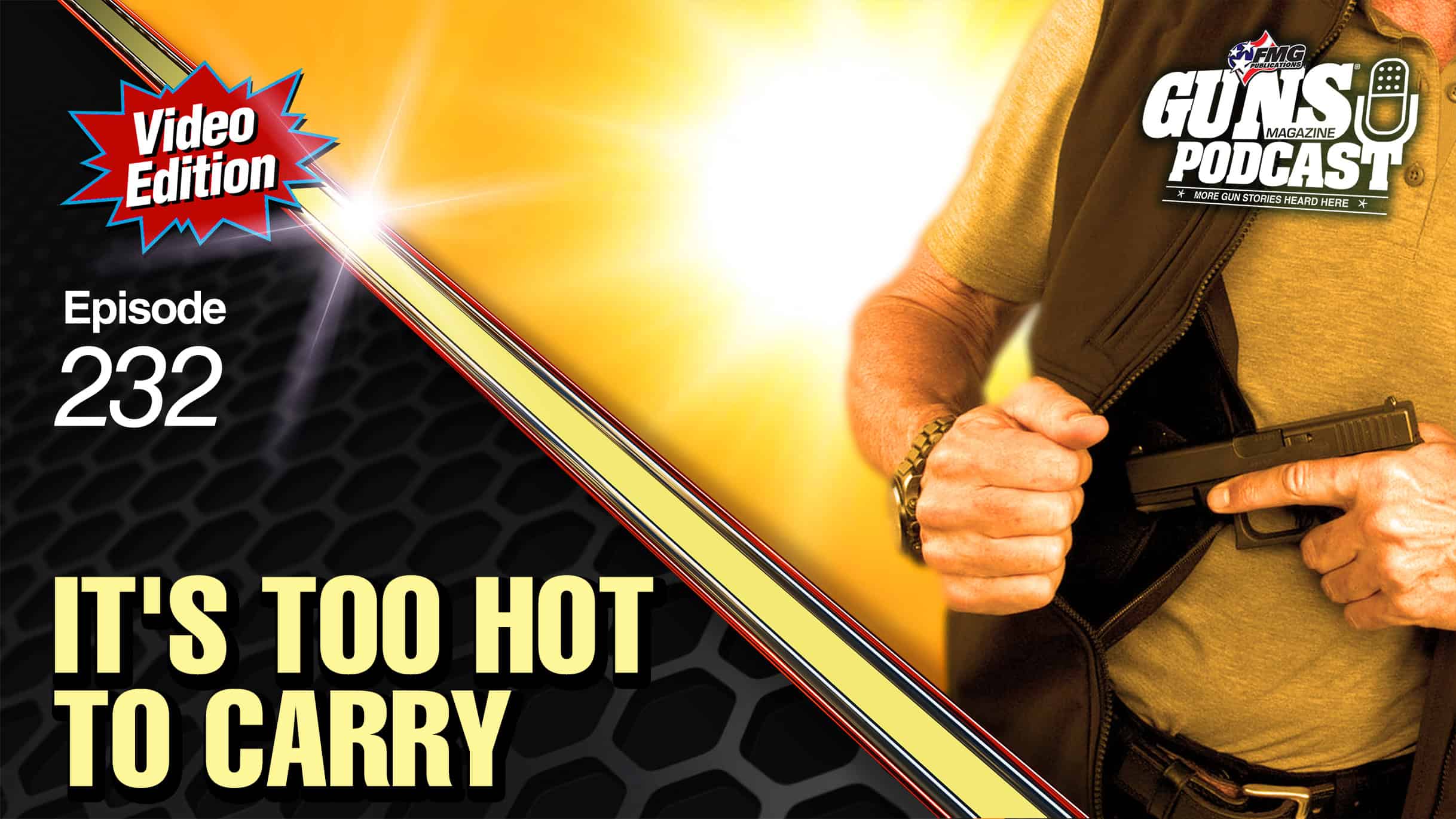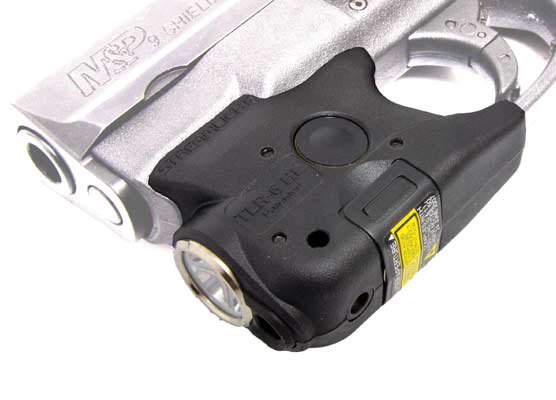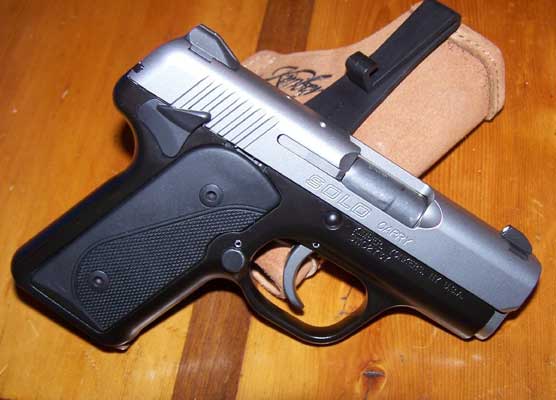Winchester 1907
Brute Force Reliability
Circa 1900, there was a tremendous amount of interest and competition to develop semiautomatic handguns, shotguns and rifles. In 1906 Winchester announced a new rifle and cartridge, the Model of 1907. The ’07 was a self-loading (semi-automatic) design in .351 WSL (Winchester Self-Loading). Both were improvements on the model 1905 rifle and the relatively feeble .35 cartridge.
The 1907 semi-automatic rifle functioned on the blowback operating system, in which the breech bolt and barrel are never mechanically locked as the recoil spring holds the bolt forward against the chambered cartridge. When the rifle is fired, the bullet moves down the barrel while the case moves the opposite direction according to the laws of physics.
Science Class
In moving back, the case has to overcome the inertia of the bolt and the tension of the recoil spring and mainspring. Blowback actions are generally limited to cartridges of modest power. Almost all .22 LR rimfire semiautomatic rifles and pistols operate on the blowback system. Most .25 and .32 ACP pocket pistols are blowbacks, as are some .380s.
Theoretically, most any cartridge could operate as a blowback provided there are no limitations on breech block weight or recoil spring strength. In reality, we quickly run into limitations on overall weight and on recoil springs capable of being handled by the shooter. I recall reading a .30-’06 blowback would require the breech block alone to weigh 26 ½”. Designers developed several semi-auto mechanisms to keep the breech and barrel locked for a brief interval to allow the bullet to exit the barrel and for pressure to drop — long recoil, short recoil, inertia, gas (several variations), roller locked, tilting barrel, rotating barrel.
But back then, Winchester committed to the blowback system and developed the most powerful cartridge they could fit into a reasonably sized rifle. The .351 WSL fired a 180p-grain bullet at a claimed 1,870 fps. from a 20″ barrel, roughly the same power class as .30-30 loads from a 20″ barrel.
The 1907 rifle has an operating rod extending through the forearm. Beneath the forearm wood is a weight in addition to the weight of the breech block. Although only about 38″ long overall, the 1907 weighs about 7.75 lbs. The recoil spring itself is quite strong. Between the weight and the spring, the system works just fine.
A blowback semi-auto tends to accentuate recoil due to the breech block (or slide in a pistol) striking the receiver at relatively high velocity. On the plus side, blowback designs are generally simple and very reliable. There’s not a lot going on, nothing to unlock and lock. Gas pressure alone is enough to extract fired cases; the only purpose of the extractor is to extract unfired cartridges. Ejection tends to be enthusiastic. True, the 1907 rifle was a bit heavy and the .351 WSL cartridge a bit underpowered but they worked and kept on working. In 1907 it was enough. Like the legendary dancing pig, the important thing isn’t how well it dances but that it dances at all.
On The Hunt
Winchester intended their semi-auto to be a hunting rifle though it was never a big seller. I think the reason was simple — money. At the time the highly respected Winchester 1894, Savage 1899, and Marlin 1893 rifles retailed around $18 to $20. The 1907 had a retail price in 1910 of $30. The difference seems like nothing today but back then it meant a difference of one- or two-weeks’ wages.
Although the hunting community gave it a lukewarm reception, the 1907 (much to Winchester’s surprise, I believe) found favor as a military and police arm. The compact overall length, adequate power, semi-automatic action and reliability made the 1907 popular for specialized military purposes such as observers in WWI aircraft, and with factory or prison guards and peace officers. Charles Askins Jr. was a Border Patrol officer in the 1920s to ’30s. In the 1953 The Pistol Shooter’s Book, in a chapter titled “Modern Gunfighters,” Askins wrote:
“During the 10-year period from 1924 to ’34, the Border Patrol in the El Paso area alone had an average of a gun battle every 17 days. I have known of as many as three separate and distinct engagements at arms in a single night …”
“The Border Patrol worked in three-man teams; at first two-man teams were tried but pairs simply lacked fire power so a third was added. An ideally armed three-man squad would have two .351 Winchester auto rifles and a repeating shotgun. The officers were compelled to purchase these arms themselves. The U.S. Government at the time could furnish only the old bolt-operated Enfield rifle….” The Pistol Shooter’s Book, copyright © 1953 Charles Askins Jr.
The standard 1907 used a five-shot detachable magazine. Winchester also offered 10-shot magazines — I’ve heard of, but never seen, a 15-shot magazine. Original magazines are hard to find and expensive, but Triple K makes 10-shot magazines for the 1907.
The 1907 remained in production for 50 years, although only about 59,000 were made. If the idea of a medium-power .35-cal. rifle appeals, today we have the .350 Legend and .360 Buckhammer cartridges offering more velocity. Leave the old walnut/polished blue steel 1907s to those pathetic old guys still lost in the past. We won’t mind.

